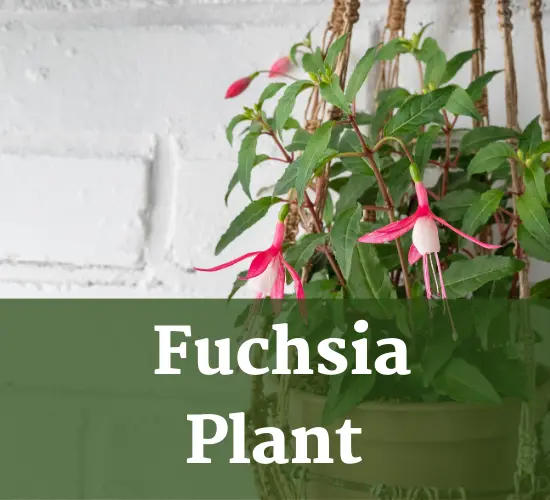Table of Contents
Why Are My Fuchsia Buds Not Opening
Fuchsia plants are known for their beautiful hanging flowers, but sometimes they can be frustrating for gardeners when they refuse to bloom. There are several reasons why a fuchsia plant may not flower, including inadequate sunlight, improper fertilization, and the need for pruning or pinching.
However, with the right care and attention, you can encourage your Fuchsia plant to bloom beautifully and add a touch of colorful charm to your garden.
In this article, we will provide tips and advice on how to care for your Fuchsia plant to ensure it produces an abundance of flowers. We will explore the various causes of non-flowering in fuchsia plants and offer practical solutions to improve sunlight exposure and fertilization.
Key Takeaways
- Inadequate sunlight, improper fertilization, and the need for pruning or pinching can prevent fuchsia plants from flowering.
- Fuchsia plants require bright indirect light or shaded areas to bloom.
- Providing adequate water and fertilizer can encourage growth and blooming.
- Enhancing the amount of indirect sunlight and utilizing water-soluble or slow-release fertilizers can stimulate the growth and flowering of fuchsia plants.
Causes of Non-Flowering
The lack of Fuchsia flowering may be due to a need for pruning or pinching. By removing old blooms, the plant can focus its energy on producing new flowers. Pruning techniques can also be used to control the shape and size of the plant.
It is important to identify pest issues that may be affecting the plant, as they can also contribute to a lack of flowering. Regular maintenance and monitoring can prevent these issues from hindering the plant’s growth and blooming potential.

In addition to pruning, a requirement for bright indirect light or shaded areas is necessary for Fuchsia plants to bloom. Lack of sunlight can cause a lack of energy to bloom, while too much direct sunlight can stress the plant and cause it to stop growing. It is important to find the right balance of light for the plant.
Providing adequate water and fertilizer, such as water-soluble or slow-release fertilizers, can also encourage growth and blooming. By addressing these factors, Fuchsia plants can thrive and produce beautiful flowering displays.
Improving Sunlight and Fertilization
Enhancing the amount of indirect sunlight and utilizing water-soluble or slow-release fertilizers can stimulate the growth and flowering of the hanging plant with colorful blooms. Fuchsia plants require bright indirect light as indoor plants or shaded areas as outdoor plants. Insufficient sunlight can cause a lack of energy to bloom, while too much direct sunlight can cause stress and hinder growth. Therefore, it is crucial to provide the right amount of sunlight for optimal growth and flowering.
In addition to proper sunlight, fuchsia plants love being fed with a water-soluble fertilizer once a month or slow-release fertilizers. These fertilizers provide the necessary nutrients to stimulate growth and flowering. Pruning techniques, such as pinching off old flowers, can also encourage continuous flowering.
Maximizing growth and flowering requires a combination of appropriate sunlight and fertilization, along with proper pruning techniques to maintain a healthy and vibrant fuchsia plant.
Frequently Asked Questions
What are common pests that can affect Fuchsia plants and how can they be treated?
Pest prevention is crucial for fuchsia plants as common pests like Spider mites and Whiteflies can damage foliage and hinder flowering. Organic treatments such as neem oil or insecticidal soap can be used to control infestations.
How often should Fuchsia plants be watered and what is the best method for watering?
The ideal frequency for watering fuchsia plants depends on various factors, including temperature, humidity, and soil type. Watering methods that promote even moisture distribution and avoid waterlogging are recommended, such as bottom watering or using a watering can with a fine nozzle.
Can Fuchsia plants handle extreme temperatures or should they be kept in a specific temperature range?
As the adage goes, “Extremes are bad, moderation is best.” Fuchsia plants have limited tolerance for extreme temperatures, which can negatively impact their ability to bloom. Following proper fuchsia blooming tips, such as providing ample shade and avoiding direct sunlight, can help ensure healthy growth and blooming.
Are there any specific soil requirements for Fuchsia plants to thrive?
Fuchsia plants thrive in well-draining soil with a pH range of 5.5-6.5. Soil that is too alkaline can cause nutrient deficiencies and hinder Fuchsia growth. Adding organic matter can improve soil quality and promote healthy root development.
Conclusion
Fuchsia plants are known for their stunning flowers but lack of blooming can lead to frustration among plant owners. This article has highlighted the various causes of non-flowering in fuchsia plants, including inadequate pruning and pinching, insufficient sunlight, and improper fertilization. To encourage blooming, it is essential to address these factors and provide the necessary care for the plant.
Improving sunlight and fertilization is crucial in ensuring that your fuchsia plant blooms beautifully. This involves providing bright but indirect light, as direct sunlight can lead to leaf burn. Additionally, proper fertilization with a balanced fertilizer can provide the necessary nutrients to support flower development.
Therefore, taking the necessary steps to care for your fuchsia plant is not only rewarding but also beneficial to the environment.